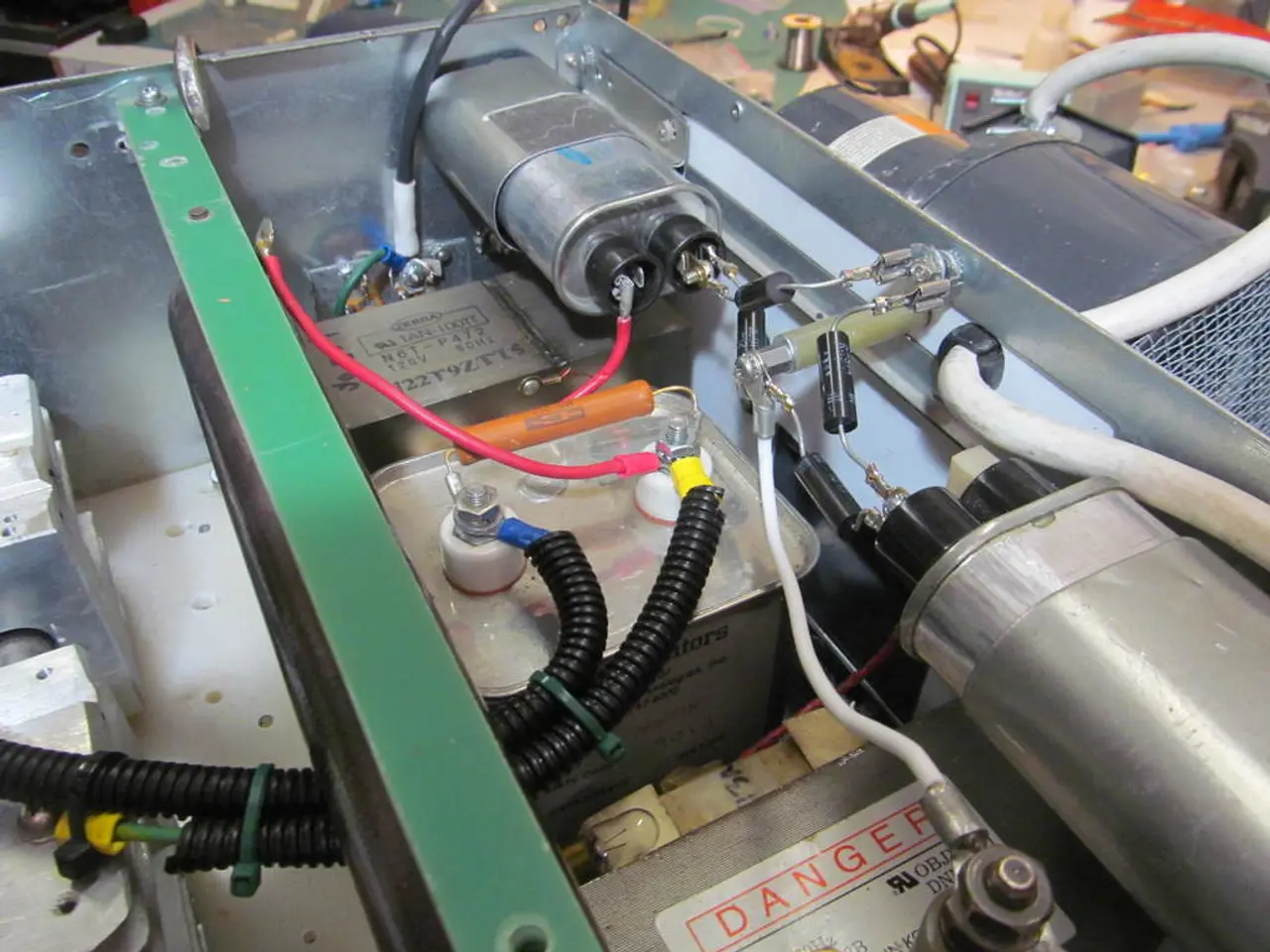Optimizing Functionality through Magnetic Brakes: A Handbook for Mechanics and Designers
In the realm of braking systems, magnetic brakes are making a significant impact, offering numerous benefits over traditional mechanical, hydraulic, and pneumatic brakes. These innovative braking solutions, which include magnetic powder brakes and permanent magnet brakes, are particularly valuable in specific applications due to their key advantages.
Key Benefits of Magnetic Brakes
A comparison of magnetic brakes with their mechanical, hydraulic, and pneumatic counterparts reveals several significant advantages (see table below).
| Aspect | Magnetic Brakes | Mechanical Brakes | Hydraulic Brakes | Pneumatic Brakes | |-------------------------|-------------------------------------------------------------------------------|-------------------------------------------|-------------------------------------------|------------------------------------------| | Wear and Maintenance| Wear-free operation due to non-contact electromagnetic fields leads to minimal mechanical wear and longer lifespan, reducing maintenance and downtime[1].| Subject to friction wear requiring regular inspection and replacement.| Wear due to friction but generally less than mechanical brakes; maintenance includes fluid checks and seal replacements.| Wear depends on mechanical components; regular checks for leaks and air supply needed.| | Durability and Reliability| High reliability and durability because of frictionless operation; less prone to damage from mechanical stress[1].| Durable but more prone to wear and tear.| Reliable but dependent on fluid integrity.| Reliable but sensitive to air quality and leaks.| | Control and Precision| Offer precise torque control and fast, backlash-free engagement suitable for fine control applications like servo motors and tension control[1][4].| Mechanical brakes can have less precise control due to physical linkages.| Good control, but sometimes slower response than magnetic brakes.| Moderate control, generally slower response than hydraulic or magnetic brakes.| | Integration and Size| Compact design and easy integration, especially in modern applications e.g., electric vehicles, servo systems, and medical devices[2][4].| Bulkier due to mechanical components.| Bulky due to fluid reservoirs, lines, and actuators.| Require compressors and air lines, which can increase size and complexity.| | Weight | Generally lighter since they dispense with heavy hydraulic or pneumatic systems, beneficial in automotive and automation sectors[2].| Mechanical brakes can be heavy due to discs and linkages.| Heavier due to fluids and reservoirs.| Heavier because of air compressors and pipelines.| | Energy Efficiency | Low energy loss as braking is electromagnetic rather than frictional; some systems (EMB) integrate well with regenerative braking for increased efficiency[2].| Mechanical brakes waste energy as heat via friction.| Energy loss due to fluid dynamics; less efficient.| Energy loss in air compression and conversion; moderate efficiency.|
Applications of Magnetic Brakes
The advantages of magnetic brakes have led to their adoption in various industries.
Industrial Automation
In industrial automation, magnetic brakes are employed for tension control in winding/unwinding processes and speed regulation in conveyors, packaging, textile, printing, and electronics industries due to their precise torque control and wear-free operation[1].
Electric Vehicles (EVs)
Electromechanical brakes (EMB) integrate easily with EV chassis, offering reduced weight and improved assembly efficiency, and supporting advanced vehicle control systems like regenerative braking and stability control[2].
Servo Motors and Medical Equipment
Permanent magnet brakes provide fast, backlash-free actuation critical in sensitive applications requiring precise positioning and safety braking[4].
Packaging and Printing
Magnetic brakes are used for accurate tension control and speed regulation with consistent performance over prolonged use without frequent maintenance[1].
Summary
In summary, magnetic brakes offer several advantages over mechanical, hydraulic, and pneumatic brakes: reduced wear and maintenance needs, high durability and reliability, more precise and rapid control of braking torque, compactness and lighter weight, and lower operational costs. These benefits make magnetic brakes highly suitable for industries requiring precision, durability, and integration with modern electronic control systems.
References: - [1] Magnetic Powder Brake benefits and applications, CBB Machine, 2025. - [2] Electromechanical Braking Systems in EVs, Infineon Technologies, 2025. - [4] Permanent Magnet Brake COMBIPERM P1, KEB Automation, 2025. - Future advancements in magnetic brake technology include increased efficiency, larger scale applications, and integration with more complex systems. - Precise control is a key advantage of magnetic brakes, making them ideal for complex mechanical systems. - Heat dissipation in magnetic brakes is achieved through the interaction between the moving core and the rotating component, and the core and surrounding heat sink materials. - Magnetic brakes have lower maintenance requirements compared to traditional mechanical brakes. - Faulty electrical connections in magnetic brakes can lead to performance issues or system failure. - Magnetic brakes have fewer moving parts than hydraulic or pneumatic systems, reducing maintenance requirements. - The trimming screw in a magnetic brake adjusts the magnetic brake’s approach rate under no-load conditions, ensuring stable and accurate braking performance when the system is idle. - Magnetic brakes may not be suitable for all applications, and proper consideration of operating conditions, load requirements, and compatibility with the system is crucial. - Overheating in magnetic brakes can cause wear and potential equipment damage.
Data-and-cloud-computing technology can be employed to optimize the performance of magnetic brakes in various industries. For instance, real-time monitoring and predictive maintenance could be achieved using IoT sensors and edge computing to detect potential issues before they lead to system failure. Similarly, cloud computing could support the development of advanced control algorithms for magnetic brakes, improving their efficiency and precision in servo motors, electric vehicles, and other applications. Additionally, data analysis could identify trends in magnetic brake usage, enabling the design of more robust and cost-effective magnetic braking solutions in the future.




